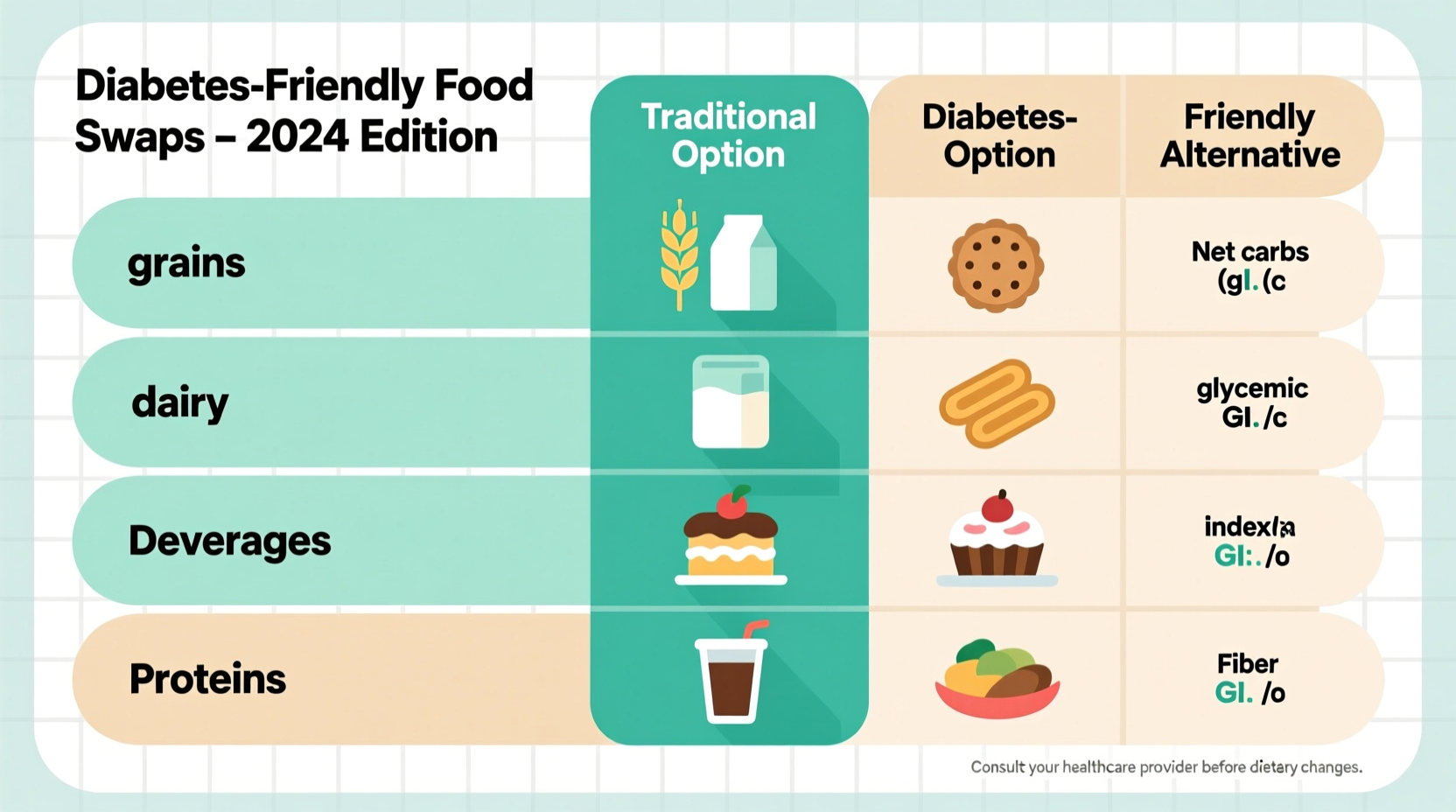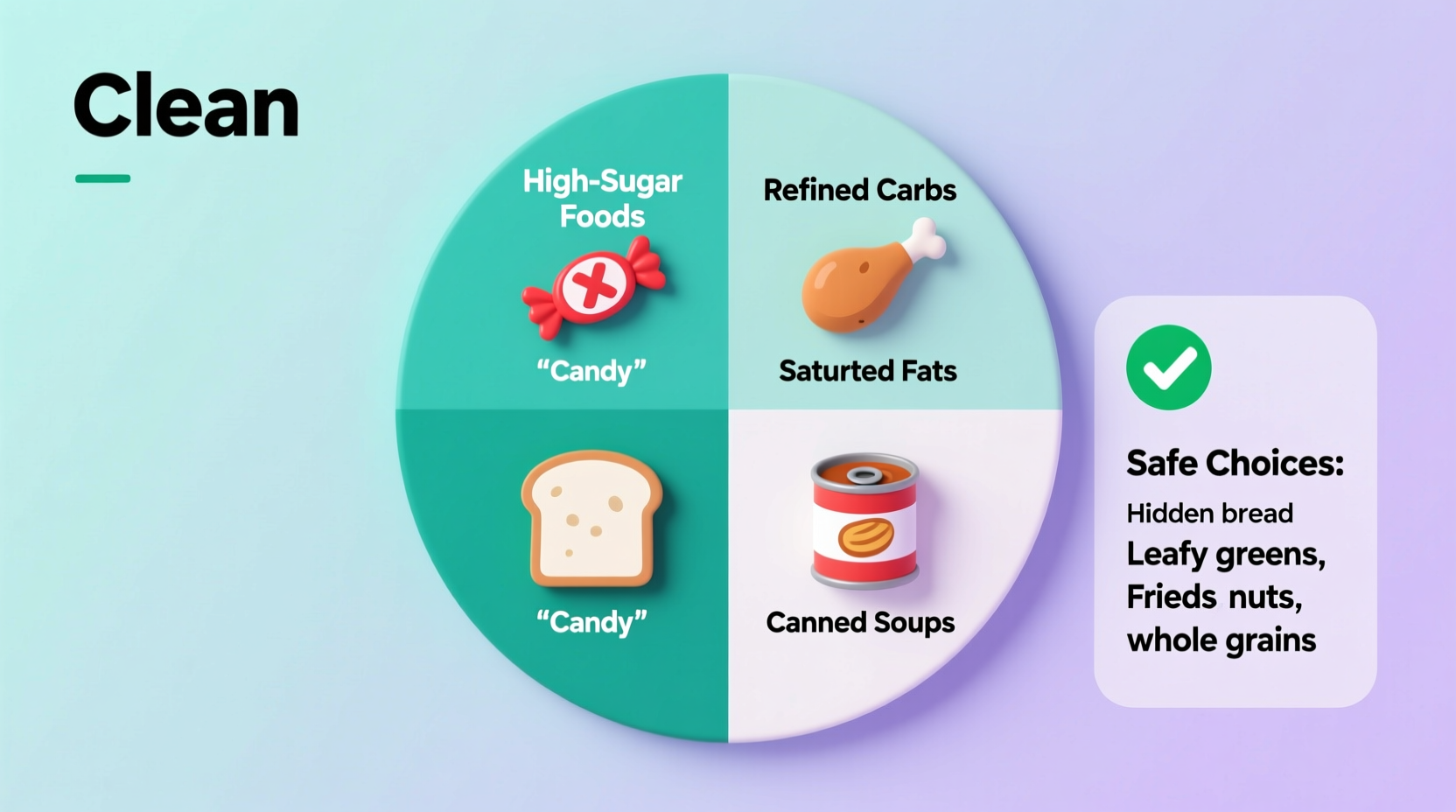If you're managing diabetes, avoiding these top foods is critical for blood sugar control: sugary beverages, refined grains (white bread, white rice), processed snacks, high-sugar fruits, and fried foods. These items cause rapid blood sugar spikes, increase insulin resistance, and worsen diabetes complications. Replacing them with whole foods, high-fiber alternatives, and lean proteins can significantly improve your glucose management and long-term health outcomes.
Living with diabetes requires careful food choices, but knowing exactly what foods to avoid with diabetes can transform your blood sugar management. As someone who's worked with nutrition experts and studied traditional dietary approaches across cultures, I've seen how strategic food substitutions make the biggest difference in diabetes control. This guide delivers evidence-based recommendations you can implement immediately—not just generic advice you've heard before.
Why Certain Foods Worsen Diabetes Control
When you have diabetes, your body struggles to process carbohydrates effectively. Foods high in refined sugars and simple carbs break down quickly into glucose, causing dangerous blood sugar spikes. The American Diabetes Association explains that consistent blood sugar management prevents complications like nerve damage, vision problems, and cardiovascular disease. Understanding which foods trigger these spikes—and why—is your first step toward better control.
Top Foods to Eliminate From Your Diabetes Diet
Sugary Beverages: The Blood Sugar Emergency
Soda, fruit juices, energy drinks, and sweetened coffees deliver sugar straight into your bloodstream. A single 12-ounce soda contains about 40 grams of sugar—equivalent to 10 teaspoons. Research from the National Institute of Diabetes and Digestive and Kidney Diseases shows that regular sugary drink consumption increases type 2 diabetes risk by 26%. Even "healthy" fruit juices lack the fiber that slows sugar absorption in whole fruits.

Refined Grains: The Hidden Blood Sugar Bombs
White bread, white rice, and regular pasta have had their fiber-rich outer layers removed, causing rapid glucose conversion. A study published in Diabetes Care found that replacing white rice with brown rice reduced type 2 diabetes risk by 16%. The glycemic index tells the story: white bread scores 75 while whole grain alternatives typically score under 55.
Processed Snack Foods: The Double Threat
Chips, crackers, and packaged cookies combine refined carbs with unhealthy fats—a dangerous combination for insulin resistance. The CDC reports that ultra-processed foods account for over 60% of calories in the average American diet, directly contributing to diabetes complications. These foods often contain hidden sugars under 50+ different names.
| Problematic Food | Why It's Harmful | Smart Alternative |
|---|---|---|
| Soda (12oz) | 40g sugar, zero fiber | Sparkling water with lemon |
| White bread | Glycemic index 75 | 100% whole grain bread |
| Flavored yogurt | 20-30g added sugar | Plain Greek yogurt + berries |
| Fried foods | Increases insulin resistance | Baked or grilled alternatives |
Context Matters: When Some "Forbidden" Foods Might Work
Diabetes nutrition isn't always black and white. The Mayo Clinic explains that individual responses vary based on factors like:
- Your specific diabetes type and medication regimen
- Timing of food consumption relative to physical activity
- Combination with other foods (fat and fiber slow sugar absorption)
For example, a small serving of high-sugar fruit might be acceptable after exercise when your body needs quick energy. Always monitor your blood sugar to understand your personal responses.
Evolution of Diabetes Dietary Recommendations
Diabetes nutrition guidance has significantly evolved. In the 1980s, the focus was primarily on carbohydrate restriction. Today's approach, per the American Diabetes Association's 2023 standards, emphasizes:
- Whole food patterns over isolated nutrients
- Personalized nutrition plans
- Quality of carbohydrates rather than just quantity
- Mindful eating practices
This shift recognizes that sustainable dietary changes—not extreme restrictions—yield the best long-term outcomes for blood sugar control.
Practical Swaps You Can Implement Today
Immediate changes make the biggest impact. Start with these evidence-based substitutions:
- Replace white rice with cauliflower rice or quinoa (fiber increases from 0.6g to 5g per serving)
- Choose full-fat plain Greek yogurt instead of flavored varieties (sugar drops from 20g to 4g)
- Use vinegar-based dressings instead of creamy options to improve insulin sensitivity
- Add cinnamon to foods—it may help lower blood sugar according to NIH research
Avoiding Common Diabetes Diet Misconceptions
Many people with diabetes believe they must eliminate all sugar—a myth that often leads to unhealthy restriction cycles. The truth is moderation matters more than elimination. The key is understanding portion sizes and timing. For special occasions, pair small sweet treats with protein and fat to minimize blood sugar impact. Work with a registered dietitian to create a sustainable plan that includes foods you enjoy.
Your Next Steps for Better Blood Sugar Control
Start by eliminating just one problematic food category this week. Track your blood sugar before and after meals to see the immediate impact. Remember that small, consistent changes create lasting results. Consult your healthcare provider before making significant dietary changes, especially if you take insulin or other diabetes medications.











 浙公网安备
33010002000092号
浙公网安备
33010002000092号 浙B2-20120091-4
浙B2-20120091-4